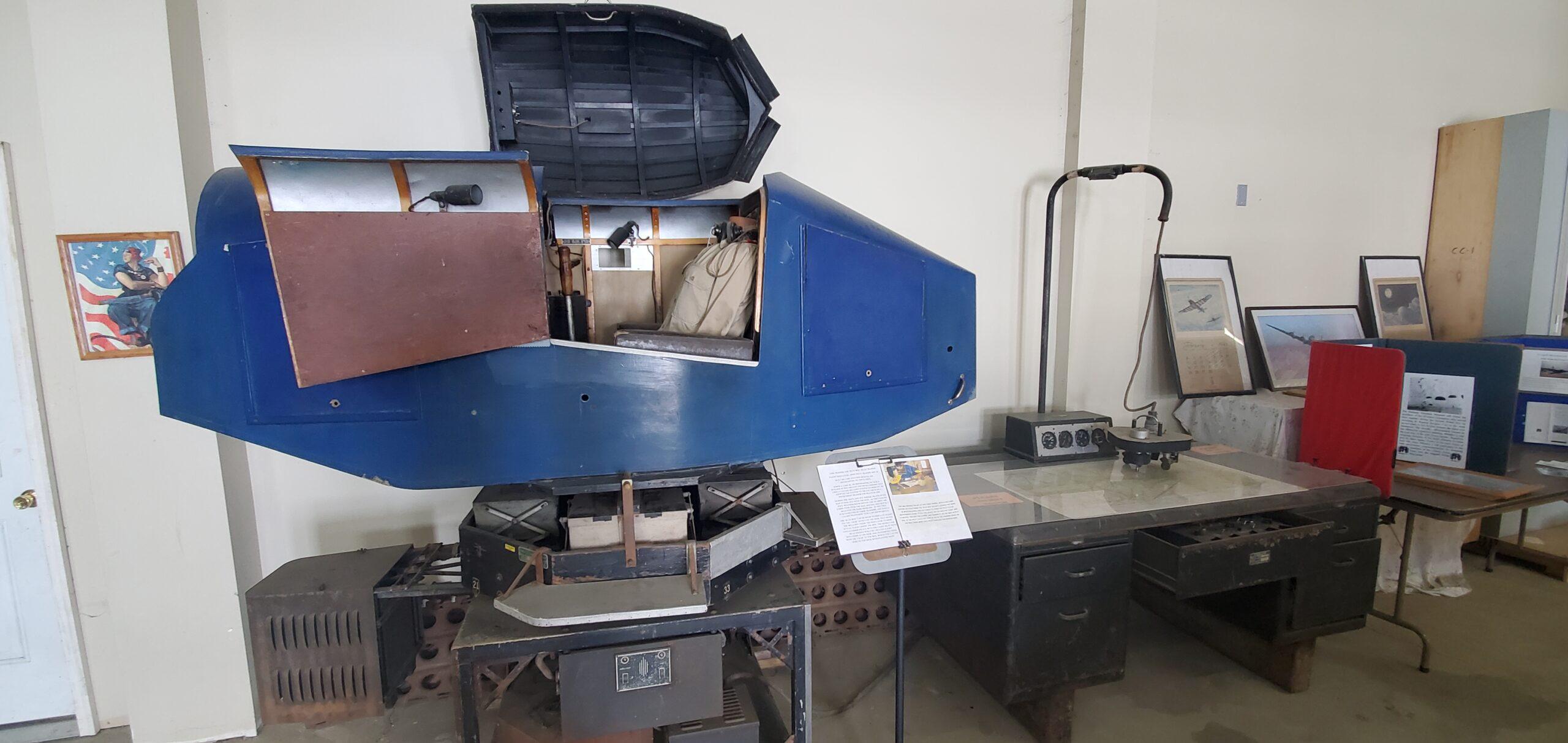
AN-T-18
AN-T-18 Instrument Trainer
"Link Trainer"

"Link Trainer"
National Warplane Museum
The Link Trainer — often called the "Blue Box" — was one of the most revolutionary aviation training devices of its time. Developed in the 1930s by Edwin Link, these mechanical simulators trained hundreds of thousands of WWII pilots in instrument flying long before they ever entered a real cockpit, saving countless lives and preparing pilots for the demanding conditions of war.
Introduced prior to WWII, the Link Trainer became standard equipment for flight schools worldwide as aviation transitioned to more complex instrument flying. The AN-T-18 model, introduced in the early 1940s, was a more advanced version used heavily throughout WWII and beyond. Using pneumatic bellows, electric motors, and real cockpit controls, the Link simulated flight conditions, instrument responses, and flight maneuvers, allowing pilots to practice instrument navigation safely on the ground.
The Link Trainer was essential for teaching pilots to fly blind — entirely by reference to instruments — in poor weather, night conditions, or combat scenarios where visual flight was impossible. It drastically improved pilot safety and capability, and became a critical component of every Allied flight training program throughout WWII.
Link AN-T-18 Instrument Trainer (Military No. 41-201 / Manufacturer’s No. 9139)
Built in 1941 by the Link Aviation Company in Binghamton, NY, just a short distance from the National Warplane Museum, this AN-T-18 represents the cutting-edge technology that revolutionized pilot training during WWII. The unit was donated to the Museum in the early 2000s, where it remains on static display in its current "as-is" condition.
Though not currently operational, the Museum hopes to fully restore the trainer to working condition in the future, allowing visitors to experience firsthand how WWII pilots learned the crucial skill of instrument flying. As both a technical marvel and a local product of New York aviation history, the Link Trainer stands as a powerful symbol of the ingenuity that helped prepare Allied pilots for the challenges of war.
WWII Pilot Instrument Trainer
Donated to the museum
Method: Donated
T-Hangar
Other aircrafts in our collection


